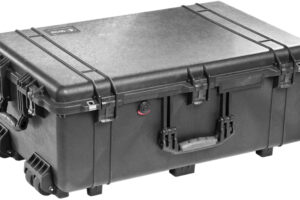
A home in Singapore comes with many financial responsibilities. More important would be the property tax aspect that could run into a sizeable amount on an annual basis. The correct calculation will ensure compliance—avoid huge fines for you—and you can also plan accordingly for your annual expenses.
Another very important consideration is refinancing a home loan in Singapore. It can be instrumental in your achieving better terms on the loan, reduced interest rates, and lower payments—thereby saving you dollars in the long run. Knowing when to refinance and how can help maximize such benefits.
This guide is therefore reckoned to enlighten persons on the calculation of property taxes and the process of refinancing your home loan, hence empowering them with the wherewithal to make informed decisions on their finances. Basically, proper management of these two major financial aspects means largely successful and trouble-free home ownership in Singapore.
Understanding Property Taxes in Singapore
Owning a home in Singapore necessitates understanding property taxes. Indeed, these taxes are an integral part of homeownership. Consequently, knowing how to calculate and manage them effectively can save you money.
What is Property Tax?
Property tax, a levy on property ownership, applies to all property owners in Singapore. Consequently, this tax helps fund public services like roads and schools. Therefore, it is crucial to pay this tax to avoid penalties.
How is Property Tax Calculated?
Property tax calculation is, in essence, straightforward. Specifically, the tax is based on the annual value (AV) of your property. Notably, AV is the estimated yearly rent if your property were rented out, excluding furniture, furnishings, and maintenance fees.
Moreover, the Inland Revenue Authority of Singapore (IRAS) assesses AV. In this process, they consider factors like property type, size, and location.
Different Tax Rates
Singapore has different tax rates for owner-occupied and non-owner-occupied properties.
- Owner-Occupied Properties: These have lower tax rates. The rates range from 0% to 16%, depending on the AV.
- Non-Owner-Occupied Properties: These have higher tax rates. The rates range from 10% to 20%, also based on the AV.
Calculating Your Property Tax
Now, let’s calculate property tax in Singapore. Follow these steps:
- Find the Annual Value (AV): Check your property’s AV on the IRAS website.
- Apply the Tax Rate: Use the correct rate based on whether you live in the property or not.
- Calculate the Tax: Multiply the AV by the tax rate.
For example, if your property’s AV is $30,000 and it is owner-occupied, the tax rate might be 4%. Your property tax would be $1,200 ($30,000 x 4%).
Tools and Resources
Various tools can help calculate your property tax. Notably, the IRAS website offers an online calculator. Indeed, this tool simplifies the process and ensures accuracy. Furthermore, financial advisors can provide personalized assistance.
Refinancing Your Home Loan
Refinancing your home loan can be a smart financial move. It involves replacing your current loan with a new one. This can lead to lower interest rates and better loan terms.
What is Refinancing?
Refinancing means taking a new loan to pay off your existing one. This new loan usually has better terms. Homeowners refinance to reduce monthly payments, secure a lower interest rate, or change the loan tenure.
Benefits of Refinancing
Refinancing offers several benefits:
- Lower Interest Rates: You can save money by securing a lower interest rate.
- Reduced Monthly Payments: Lower rates mean lower monthly payments, easing your financial burden.
- Better Loan Terms: You can switch from a variable-rate loan to a fixed-rate loan, providing stability.
- Cash Out Option: Some refinancing options allow you to borrow against your home’s equity for major expenses.
When to Consider Refinancing
Refinancing a home loan in Singapore is not always the best option. Consider it when:
- Interest rates drop significantly.
- Your credit score has improved.
- You need to change the loan tenure.
- You want to switch from a variable to a fixed-rate loan.
Steps to Refinance Your Home Loan
Refinancing your home loan can be beneficial, but it requires careful planning. Here’s a step-by-step guide to help you through the process.
Step 1: Assess Your Current Loan and Financial Situation
First, review your current loan terms. Check the outstanding balance, interest rate, and monthly payments. Understanding your financial situation is crucial before making any decisions.
- Outstanding Balance: Know how much you still owe on your loan.
- Interest Rate: Be aware of your current interest rate and whether it’s fixed or variable.
- Monthly Payments: Calculate your monthly mortgage payments to see how they impact your budget.
Assess your overall financial health. Look at your income, expenses, and credit score. This helps you determine if refinancing is a viable option.
Step 2: Research and Compare Different Refinancing Options
Next, explore various refinancing options available in the market. Different lenders offer different terms, so it’s essential to compare.
- Interest Rates: Look for lower interest rates that can save you money.
- Loan Terms: Compare the length of the loan terms. Some may offer shorter or longer terms than your current loan.
- Fees: Be aware of any fees associated with refinancing, such as processing, legal, and valuation fees.
Online comparison tools can help. They provide a quick way to compare rates and terms from different lenders.
Step 3: Apply for Refinancing
Once you find a suitable option, start the application process. Gather all necessary documents. These usually include your identity card, proof of income, and details of your current loan.
- Identity Card: Have a valid ID ready.
- Proof of Income: Provide recent pay slips or tax returns.
- Current Loan Details: Share information about your existing loan, such as the lender’s name and loan balance.
Submit your application to the chosen lender. Ensure all information is accurate to avoid delays.
Step 4: Approval Process
After submitting your application, the lender will review it. This includes a credit check and a property valuation.
- Credit Check: The lender assesses your credit score to determine your eligibility.
- Property Valuation: They may conduct a valuation of your property to confirm its market value.
If everything checks out, you’ll receive an approval. The lender will offer you the new loan terms.
Step 5: Finalize the Refinance
Finally, review and sign the new loan agreement. The lender will use the new loan to pay off your existing one. You’ll start making payments on the new loan.
- Review the Agreement: Carefully read the new loan terms before signing.
- Sign the Agreement: Sign the documents to finalize the refinance.
- New Payments: Begin making payments on your new loan as agreed.
Conclusion
Refinancing can get you better interest rates with better terms. Consequently, it becomes imperative that a homeowner in Singapore must be aware of the property taxes and refinancing options.
Indeed, it is through the steps and tips followed herein that one can make informed decisions. Moreover, always be updated on the market and seek professional advice where necessary.
Furthermore, keep in mind that, on the more professional side, refinancing is a huge deal in finance. Undoubtedly, be sure it fits your long-term goals and financial position. Ultimately, smart financial decisions will enable you to enjoy your home-buying experience and secure your financial future.




